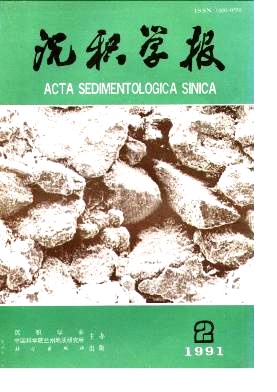Diagenetic History and Reservior Information of the Up-per Permian Changxing Formation Calcisponge Reefs iQ East- ern Sichuan and Western Hubei
- Received Date: 1989-01-03
- Publish Date: 1991-06-10
Abstract: Calcisponge reefs are well developed in the Upper Permian Changxing Formation carbonate platform,The exposed reefs are mainly distributed along three belts: The first is located on the east margin of the plat-form and develops rimming framework reefs. The second is on the border of open and drowned platforms.mainly comprises longitudinal framework reefs.The third is composed of bafflestone point reefs located with-in the platform. The framework reef complexes have undergone four diagenetic stages:(1)The depositional stage aremainly submarine cementation and blue-algae binding.The former is limited to the reef core facies, relatedto high water energy and upwelling current. The latter is well developed in the reef- core facies of thelongitudinal or point framework reef complexes within the platform. (2) Submarine phreatic cementation and evaporating dolomitization are the main diageneses of the early burial stage, mainly occurred in theback-reef bank and flat fades (both the rimming reefs and the reefs within the platform),and less can befound in the reef-core fades. (3) Mid-burial diagenesis closely related to the T2 T3 regional surface ofunconformity. Meteoric water mixed with underground water and caused dissolusion and dolomitization.(4) Deep burial diageneses are cracking. microkarst, coarse dolomite and calcite cementation. Thehydrothermal solution flown up and dissolved along crevices and stylolites ( which were well developed),formed the microkarsts, and them hydrothermal dolomite and calcite filled in the microkarsts and crevices. Secondary pores was well developed during the mid and deep-burial diagenetic stages caused by crack-ing, mined water dissolusion and dolomitization, and hydrothermal solution dissolusion(nticrokarst),made the framework reef complexes be a significant oil reservoir. The bafflestone point reefs contain very much calcic- mud, framework structure hadn’t formed,compaction is the main diagenesis through early-and mid-burial stages.Because of the poor porosity, andfew crevices and stylolites, the mixed water and hydrothermal solution have little influence during mid-anddeEp-bural stages, the baftlestone reefs are no significant oil reservoir. The diagenesis of the reef complexes is obviously controlled by the sedimentary facies and thetectionics. The regional tectonic movement, faults and T2 T3 unconformity surface, play an importantpart in mid-and deep-burial diagenesis. Synsedimentary faults controlled the distribution of the reef com-plezes, and acted as the pathways of mined water and hydrothermal solution at mid to deep-burial stages,so the active diagenesis of the framework reef complexes is closely related to the faults.
| Citation: | Chen Cbengsheng, Zhang Jiqing. Diagenetic History and Reservior Information of the Up-per Permian Changxing Formation Calcisponge Reefs iQ East- ern Sichuan and Western Hubei[J]. Acta Sedimentologica Sinica, 1991, 9(2): 44-54. |






 DownLoad:
DownLoad: